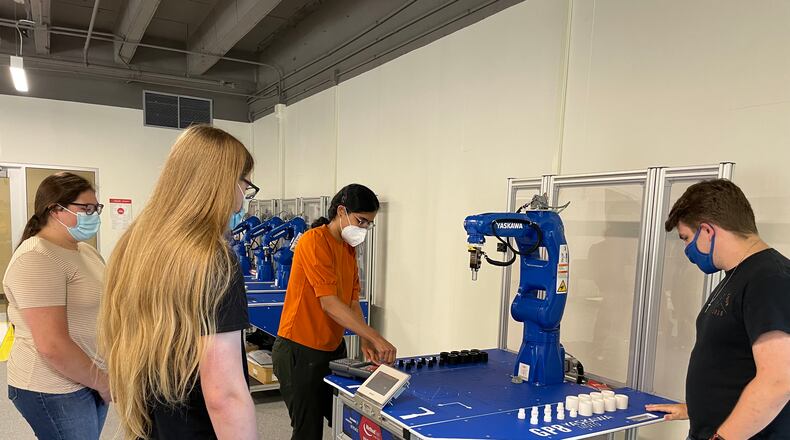Meenakski Narayan, who was recently named the James R. Myers Endowed Professor in the Department of Engineering Technology at Miami’s regional schools, said the new robotics lab on the Miami University Middletown (MUM) campus will also showcase her research on new applications of robotics in healthcare and train students for future careers in the medical industry as well as manufacturing.
The department will be able to offer certificate and industry-recognized credentials on industrial robotics systems in the new laboratory space to help meet the growing demand for a skilled workforce needed in all aspects of today’s manufacturing, said Narayan.
Mert Bal, chair of the department of engineering technology at Miami, said Narayan is the right person to oversee the new lab, according to a statement released by the university, which also has a regional campus in Hamilton.
Calling her hiring “quite a win” for Miami University Regionals, Bal said her background and expertise were in perfect alignment with Robotics and Robotics Engineering and the interdisciplinary nature of the ENT department. More than 90 applications were received for the position.”
“What impressed us about Dr. Narayan - who is only the second endowed professor in the Regionals history - was her background in the area of surgical robots and medical applications of robotics systems,” said Bal.
“Robotics in healthcare is a very popular area that has tremendous application opportunities in the southwest Ohio region,” Bal said. “Dr. Narayan’s contribution to these areas of robotics is something that definitely opens up new horizons for us and Miami Regionals in the near future, which our students and the community would greatly benefit from.”
“She is not only the subject-matter expert we were looking for, but is the ‘fresh blood’ we need for growing our robotics and other ENT programs.”
Narayan said “the opportunity and freedom to grow a new robotics program during the initial stages of my career was exciting.”
“Miami’s focus on quality and personalized teaching; distance learning programs; and its flexibility to accommodate students from all age groups, backgrounds and special needs is rare in many of the universities that I came across,” said Narayan. “Having studied my bachelor’s and master’s in research-intensive universities, I was surprised to find Miami’s undergraduate programs to be almost on-par with some of the first-year graduate courses I took. Miami’s flexibility to design and offer courses that cater to industrial and research market needs, is exceptional.”
About the Author

